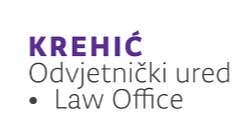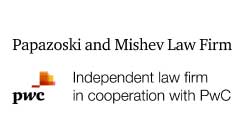The concept of a digital workplace, characterized as an employment environment allowing employees to complete tasks, collaborate, and function as part of a team, irrespective of location, has been around for some time but has gained significant traction in the aftermath of the COVID-19 pandemic. This surge in popularity can be substantially attributed to the measures enacted by the Macedonian Government to mitigate the impact of COVID-19.
While these measures have elicited mixed reactions, it is universally acknowledged that they have facilitated positive developments in several areas, notably in the digitalization of workplaces. Macedonian employers, in their bid to limit the spread of COVID-19, have embraced remote working arrangements, altering traditional business and operational practices, in particular in the IT sector.
Even after the relaxation of pandemic-related restrictions, many Macedonian employers have not reverted to pre-pandemic working arrangements. A significant number of them have opted for remote or hybrid working models (where employees work from the office only two or three days per week). The adoption of these models is influenced by the potential advantages offered by contemporary information technologies. Such technologies can either facilitate closer monitoring and control of employees, ensuring compliance and enhancing productivity through targeted software applications or grant employees greater flexibility and autonomy in their roles. This flexibility can result in improved productivity and employee contentment. The approach chosen by an employer largely depends on their philosophy and business nature, with each method having the potential to boost productivity.
However, it is crucial to acknowledge that remote work is not without its challenges. Macedonian laws do not explicitly regulate the various modalities of remote work but instead, allow the employer and the employee to agree on work from home or another location at the discretion of the employee. The requirements for implementing a remote work arrangement include the employer and the employee entering into an employment contract (or an addendum to an existing employment contract) specifying that the employee will work from home or another location. The employer is also required to provide the employment contract for remote work (or an addendum to an existing employment contract) to the Macedonian labor authorities within three days from the date of its conclusion.
Under Macedonian law, the employer continues to bear the responsibility for safeguarding the safety and health of employees, even when they transition to a remote working environment. This obligation is far from being a simple or straightforward task to accomplish in practice, primarily due to the nuanced and diverse conditions presented by the home-based or alternative workspaces that employees may utilize during remote work. Ensuring employee health and safety in remote work arrangements necessitates a comprehensive and meticulous assessment of the myriad risks potentially present in each unique working environment. Each employee's home or chosen place of work may exhibit a distinct set of safety and health challenges, influenced by a range of factors such as space design, equipment setup, ambient environmental conditions, and the presence of other occupants or pets. The variability inherent in these individualized workspaces makes it exceedingly difficult for employers to implement a one-size-fits-all approach to managing and mitigating occupational health and safety risks. It is important to note that the Macedonian labor authorities have the power to prohibit remote work if it poses a risk to the safety and health of employees or the environment.
In addition to the need for customization in response to varied working conditions, the task of evaluating and addressing the safety and health risks associated with employees’ homes and alternative workspaces imposes a significant burden on employers. This endeavor not only demands a considerable investment of time and resources but also requires specialized knowledge and expertise to accurately identify and respond to the specific risks inherent in different environments. Furthermore, the practicality of employers conducting thorough assessments of, and interventions in, the remote workspaces of employees is questionable. In certain situations, it may even be an unfeasible expectation due to limitations such as privacy concerns, logistical challenges, and the absence of legal or contractual provisions empowering employers to effect changes in privately owned spaces. These constraints further complicate the employer’s role and responsibilities in ensuring the safety and health of remote workers, at times rendering the exercise practically impossible.
On the other hand, employees might find it difficult to maintain a healthy work-life balance while working remotely. In particular, working from home can blur the boundaries between professional and personal life, potentially negatively impacting the employee and, subsequently, the employer. This blurring can lead to decreased employee well-being and productivity. Employees who remain connected to their workplace while at home can struggle to recover from work-related stress, potentially leading to “technostress"—a negative psychological state associated with the use or anticipated use of digital technologies. In considering the adoption of remote work, it is vital to weigh its pros and cons. A hybrid approach is often seen as optimal, as it can foster a healthier work-life balance for employees, thereby enhancing productivity and cultivating a positive business atmosphere.
By Gjorgji Georgievski, Partner, and Dimitar Trombevski, Junior Associate, ODI Law





















